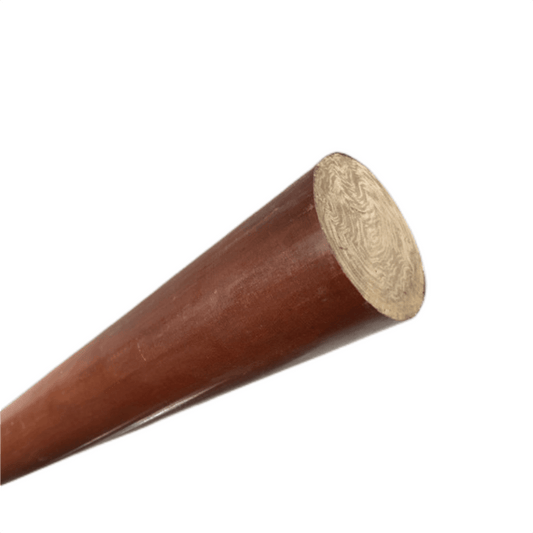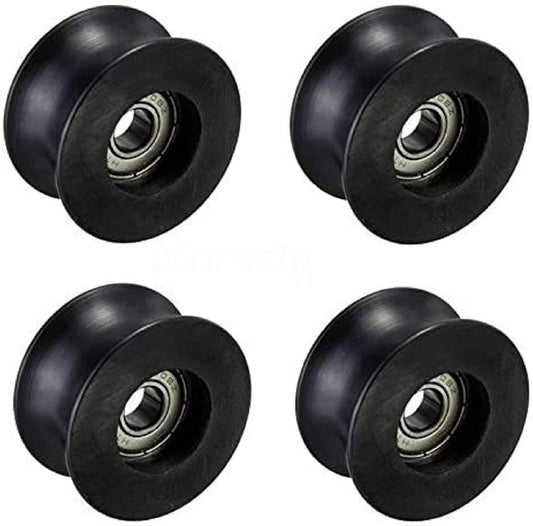Mechanical parts are components that are used as the main structure or function of various machines and devices. They can range from simple screws and bolts to complex gears and valves. Mechanical parts are essential for many applications and industries, such as robotics, aerospace, automotive, medical, and more.

However, using traditional materials such as metals and alloys for mechanical parts can pose some challenges and limitations. For example, metals and alloys can be heavy, expensive, difficult to process, prone to corrosion, and harmful to the environment. Therefore, engineers and manufacturers are always looking for alternative materials that can offer better performance and efficiency for mechanical parts.

One of the most promising and popular alternatives is plastic. Plastic is a synthetic material that can be molded or shaped into various forms and sizes. Plastic has many advantages over metals and alloys, such as:
- Corrosion resistance. Plastic can withstand harsh environments that contain moisture, salt, acids, or oxidizers without rusting or deteriorating. Plastic can also resist UV rays, heat, cold, and fire.
- Lower weight. Plastic is lighter than most metals and alloys, which can reduce the overall weight and energy consumption of machines and devices. Plastic can also improve the speed and agility of mechanical parts.
- Easier processing. Plastic can be easily processed by various methods, such as injection molding, extrusion, thermoforming, or 3D printing. Plastic can also be cut, drilled, or machined by CNC machines with less wear and tear on the tools.
- Cost saving. Plastic is cheaper than most metals and alloys, which can lower the production cost and increase the profit margin of mechanical parts. Plastic can also reduce the maintenance and repair cost of mechanical parts by lasting longer and requiring less lubrication.
- Improved sliding properties. Plastic has a low coefficient of friction, which means it can slide smoothly and quietly against other surfaces without generating heat or noise. Plastic can also reduce the wear and tear of mechanical parts by minimizing friction.

But what plastic is best for mechanical parts? There are many types of plastics with different properties and characteristics that suit different applications and requirements. In this article, we will help you choose the right plastic for mechanical parts by explaining the factors and criteria that influence the selection process, the methods and tools that can help you make the decision, and some tips and recommendations for choosing the best plastic for mechanical parts.
Plastic Solutions for Mechanical Engineering
Plastic is a broad term that covers a wide range of synthetic materials that are composed of polymers. Polymers are long chains of repeating units called monomers that are linked together by chemical bonds. The type, number, arrangement, and configuration of monomers determine the properties and characteristics of polymers.
There are many types of plastics that can be classified into different categories based on their structure, composition, behavior, or application. Some of the most common categories are:
- Thermoplastics. Thermoplastics are plastics that can be heated and melted into a liquid state and then cooled and solidified into a solid state repeatedly without changing their properties or structure. Thermoplastics are easy to process by various methods such as injection molding or extrusion. Some examples of thermoplastics are polyethylene (PE), polypropylene (PP), polyvinyl chloride (PVC), polystyrene (PS), nylon (PA), acrylic (PMMA), polycarbonate (PC), etc.

- Thermosets. Thermosets are plastics that undergo a chemical reaction when heated that causes them to cross-link into a rigid network that cannot be melted or reshaped again. Thermosets are hard and durable but difficult to process by conventional methods. Some examples of thermosets are epoxy resin (EP), phenolic resin (PF), urea-formaldehyde resin (UF), melamine-formaldehyde resin (MF), etc.
- Elastomers. Elastomers are plastics that have high elasticity and flexibility that allow them to stretch and deform under stress and return to their original shape when the stress is removed. Elastomers are soft and rubbery but resistant to abrasion and impact. Some examples of elastomers are natural rubber (NR), synthetic rubber (SR), silicone rubber (SI), polyurethane rubber (PU), etc.

- Composites. Composites are plastics that consist of two or more different materials that are combined together to create a new material with enhanced properties or characteristics. Composites usually have a matrix material that binds together a reinforcement material that provides strength or stiffness. Some examples of composites are fiberglass (FRP), carbon fiber (CFRP), wood plastic (WPC), etc.
Plastic solutions for mechanical engineering are often considered as a convenient and effective option for mechanical parts such as gears, supports, sliding elements, spacers, valve components, and many other applications. Plastic solutions for mechanical engineering can offer various benefits, such as:
- Higher strength and stiffness. Plastic solutions for mechanical engineering can have high tensile strength and modulus of elasticity that can withstand high loads and stresses without breaking or deforming. Plastic solutions for mechanical engineering can also have high impact strength and toughness that can resist shocks and vibrations without cracking or shattering.
- Better wear and fatigue resistance. Plastic solutions for mechanical engineering can have low friction and abrasion that can reduce the wear and tear of mechanical parts and extend their service life. Plastic solutions for mechanical engineering can also have high fatigue resistance that can endure repeated cycles of loading and unloading without losing their properties or performance.
- Lower noise and vibration. Plastic solutions for mechanical engineering can have low density and damping that can reduce the noise and vibration of mechanical parts and improve their comfort and safety. Plastic solutions for mechanical engineering can also have low thermal expansion and contraction that can prevent noise and vibration caused by temperature changes.
- Higher corrosion and chemical resistance. Plastic solutions for mechanical engineering can have high resistance to various corrosive agents, such as water, salt, acids, alkalis, oils, fuels, solvents, etc. Plastic solutions for mechanical engineering can also have high resistance to various chemical reactions, such as oxidation, hydrolysis, degradation, etc.

How to Choose the Right Plastic for Mechanical Parts
Choosing the right plastic for mechanical parts is not a simple or straightforward task. There are many factors and criteria that influence the selection process, such as:
- Performance requirements. The first and foremost factor to consider is the performance requirements of the mechanical part, such as the load, stress, speed, temperature, pressure, etc. that the part will be subjected to during its operation. The performance requirements will determine the properties and characteristics that the plastic should have, such as strength, stiffness, toughness, wear resistance, fatigue resistance, etc.
- Environmental conditions. The second factor to consider is the environmental conditions that the mechanical part will be exposed to during its operation or storage, such as moisture, heat, cold, UV rays, fire, chemicals, etc. The environmental conditions will determine the properties and characteristics that the plastic should have, such as corrosion resistance, thermal stability, UV stability, fire retardancy, chemical resistance, etc.
- Design specifications. The third factor to consider is the design specifications of the mechanical part, such as the shape, size, dimension, tolerance, feature, etc. that the part will have. The design specifications will determine the properties and characteristics that the plastic should have, such as shape memory, biocompatibility, conductivity, etc.

Choosing the right plastic for mechanical parts can be a complex and challenging task that requires careful analysis and evaluation of various factors and criteria. However, there are some methods and tools that can help in the selection process, such as:
- Material data sheets. Material data sheets are documents that provide detailed information about the properties and characteristics of different plastics, such as physical, mechanical, thermal, electrical, optical, etc. Material data sheets can help compare and contrast different plastics and choose the most suitable one for the mechanical part.
- Testing standards. Testing standards are guidelines or protocols that specify how to test and measure the properties and characteristics of different plastics under various conditions and scenarios. Testing standards can help verify and validate the performance and quality of different plastics and choose the most reliable one for the mechanical part.
- Simulation software. Simulation software are programs that can model and simulate the behavior and performance of different plastics under various conditions and scenarios. Simulation software can help predict and optimize the outcome and efficiency of different plastics and choose the most effective one for the mechanical part.
- Consulting experts. Consulting experts such as material scientists, engineers, or manufacturers can help provide valuable insights and advice on choosing the right plastic for mechanical parts. Experts can help identify the needs and requirements of the mechanical part, suggest suitable plastics or combinations of plastics, and recommend appropriate methods and tools for testing and evaluation.
- Comparing alternatives. Comparing alternatives such as different types or grades of plastics or different combinations or blends of plastics can help find the best plastic for mechanical parts. Comparing alternatives can help weigh the pros and cons of each option, assess their strengths and weaknesses, and determine their trade-offs and compromises.
- Considering future needs. Considering future needs such as changes in performance requirements, environmental conditions, design specifications, etc. can help choose the right plastic for mechanical parts. Considering future needs can help anticipate potential problems or challenges, plan ahead for possible solutions or improvements, and ensure long-term sustainability and viability.

So which plastic is best for mechanical parts? - The decision should be made based on the requirements of the machine. When it comes to choosing the right plastic for a mechanical part, there is no one-size-fits-all solution. Different applications and requirements need to be matched according to the characteristics of different plastics. Therefore, it should be analyzed in multiple directions, including performance requirements of plastics, environmental conditions, design specifications, etc.
In this article we also explain how to choose the right plastic for mechanical parts through various methods and tools such as material data sheets, test standards, simulation software, etc. We also provide some tips and advice on choosing the right plastic for your mechanical parts, such as consulting an expert, comparing alternatives, considering future needs, and more.
We hope this article helped you understand how to choose the right plastic for your mechanical parts and how it can benefit your engineering and manufacturing projects. If you need more information or assistance, please feel free to contact us or visit our website. We are happy to assist you with your mechanical engineering plastic solutions.
If you are interested in using engineering plastics or would like more information, please feel free to harass us. We are a source manufacturer specialising in the custom processing and production of plastics. With a team of professional engineers and sophisticated equipment we would be happy to be disturbed and help you with your needs. Do you need a free quote or help with any questions or materials?
Our website: www.beeplastic.com
Click to contact: Mechanical Engineering Plastics







